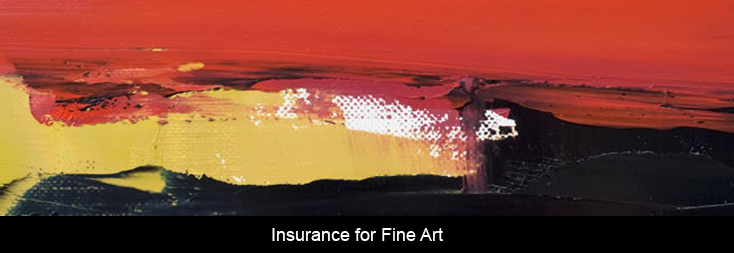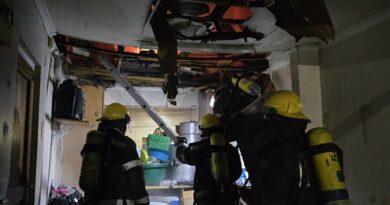What are the most important questions to ask when insuring art?
Art is not something only for artists and museums – but has become well recognized as a most sought after investment asset – well worth protecting!!
In this post we would like to reflect on the most important questions the owners of art might need to consider when protecting their works of art!
1. Do I need art insurance?
Every owner of art will know the value [financially and emotionally] that he places on his art. Whether you are the artist who wishes to insure the artwork you have created or if you are the art lover who collects art, be it paintings and/or sculptures, you need to protect the pieces you own.
Not only owners need to be aware of art insurance -but also those involved in the safekeeping of other people’s art. Art insurance is required to protect from financial loss. Everyone, from the first time art buyer, the art enthusiast, the art collector, the artist and the gallerist should insure their art.
2. What can be insured under a policy for art insurance?
Art insurance covers a much wider spectrum than many of us might be aware of. Insurance can be purchased to cover period furniture, books, carpets, clocks, gold, silver, precious metals, antique jewellery, maps, metalware, militaria, musical instruments, objects d’art, objects of virtue, paintings, sketches, prints, philatelic, photography, political memorabilia, porcelain, pottery, ceramics, glass, jade, scientific instruments, statues, sculptures, sporting memorabilia, toys and more.
3. How much insurance do I need for my collection?
There is no simple answer to this question as it will depend on the circumstances and the needs of the specific owner.
You will need to determine the value of your collection, probably by having it professionally appraised. You may also choose not to insure the entire collection; instead, you could simply cover the more valuable pieces.
It is important to keep in mind that art collections can inflate in value rather quickly and that the required cover might vary from year to year.
4. How much will art insurance cost?
This might vary significantly between insurers and are dependent on the items and their value to be insured. The cost of the insurance changes if there is an added risk. Examples of risk would be the chance of the work being stolen, damaged or lost and the cost to recover or repair the work.
The costs will also differ depending on where the art is to be kept or displayed. You might need to insure your work both at home and for exhibition.
We would like to advise that you compare both insurers, cover and pricing through thorough consultation.
5. What else do I need when insuring my collection?
When searching for the correct insurance, it is well worth coming prepared. We would like to advise that you collect and gather the following for your file:
- An inventory list. You should compile a list of specific pieces you wish to insure if you are not insuring your entire collection.
- Proof of provenance. When you acquire a piece of valuable art, you should be given some sort of certification of its origin. It may be included as part of the original invoice, which you should also keep.
- Photographs of the artwork. Not only do you need to prove you owned the work, but you must also show the condition it was in at the time of purchase [before it might be damaged or stolen].
6. What are the typical claims under Art Insurance Policies?
Whether you are a serious collector or individual who owns one or two major pieces, you need to know where the financial vulnerability lies.
“The most common financial risk to art is not theft but fire, accidental damage and ownership disputes,” says Gordon Massie, MD of Artinsure, underwritten by Hollard, who specialise only in insuring art, memorabilia and antiques.
The most common & most expensive claims are:
- Theft
- Physical damaged pieces
- Art work lost in fire or floods.
- Accidents that arise when the works are handled, transported or installed.
According to Massie: “Our Artinsure claims records confirm that in South Africa fire is probably the greatest catastrophic risk facing your client regarding their investment in art, antiques or collectibles. And it’s not only destruction by fire itself that is the problem. Damage from smoke and fire-fighter’s water can seriously depreciate the value of your client’s assets. Effective risk management includes having an insurer with the capacity and expertise to facilitate post fire response, including the need to secure, stabilize and restore items.”
7. What records do you need to keep about your art?
Not only are records needed when insuring the works of art, but also in the unfortunate event of having to submit a claim.
Holly Alaimo of Dragonfly Gallery suggests the following:
- Keep any sales receipts
- Collect any additional paperwork that speaks directly to the value of your art.
- Take a photograph of the art and keep it in a security box
- Have an antique piece assessed by an antique evaluator
- When a piece is by an up-and-coming artist, collect information on that artist and add it to your insurance packet.
It is best practise to review the artwork in your collection annually. A video camera can be an important tool to document your possessions.
8. Does your insurer understand that art often needs to be in transit?
In South Africa, most claims on works of art arise from physical damage during transportation of the work and from theft of the work. The frequency of accidental damage loss is on the rise due to the amount of assets in transit on SA’s roads as well as the condition of our roads.
Example: An Ardmore Vase purchased for R200 000 at auction in October in 2008 in Cape Town arrived in Johannesburg with a chip on it. First indications are that after restoration it will be worth R60,000 – a loss in value of R140 000. Insurance against this type of risk is vital to a collector and is not the type of cover one receives as a matter of course. This situation is an example of the need for specialist insurance that includes cover for decrease in value as a result perils of this kind.
Art not only needs to be transported for displays, but also for restoration and reframing. Most conventional insurers panic at the thought of such valuable items being transported, and impose illogical and costly security measures and inflated premiums. You will need to find an insurer who is familiar to these special risks.
9. Is your insurance structured using the average clause or on an agreed value basis?
On what basis is your works of art insured?
Normal insurance, such as conventional householders insurance is subject to the average clause. Art insurance typically uses an agreed value basis.
What is “an agreed value” of insurance?
The agreed value basis is an agreement made between the insurers and insured that the payment for damage or loss of an item will be the value of that item.
If your art is insured on a conventional householders or commercial policy, your claims will be subject to the average clause. This means that if your art investment has increased in value since your last insurance valuation, you may be under insured when a claim arises and the money paid to you will be less than the actual value of the artwork.
10. Why and when might it be important to consider a specialist art insurer?
Specialization might be important for the serious collector in the event of an emergency. This could include:
- Experienced backup by a team of people with the expertise to react quickly and appropriately to minimize loss.
- Specialization could provide both capacity and knowledge.
- Your insurer must be able to assist you in understanding your insurance policy and the fine print.
- A specialist insurer may assess your risks and reduce them where possible
Example: In the event of fire smoke damage penetrates layers of paint to different levels, depending on heat. This requires expert and sensitive restoration work. However, despite the most careful restoration, an art asset is likely to depreciate in value by up to 35%.
Conclusion:
We will raise this topic with more industry experts and share their insights on art insurance on Insurance Chat
Also view:
Artists at KKNK are aware of the need to insure fine art!




